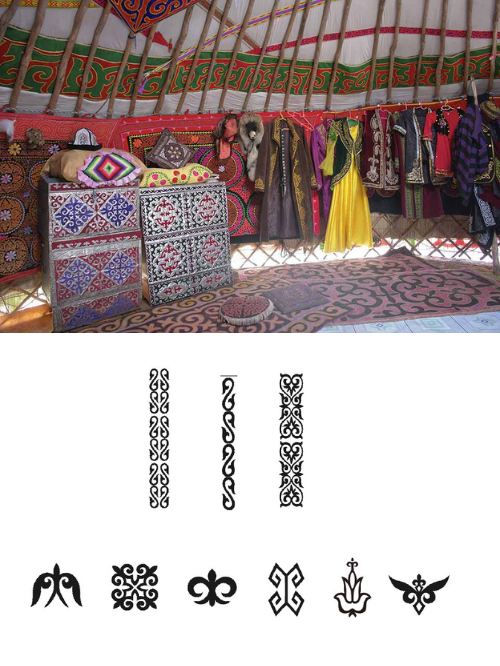
Oyu Pattern

Credit goes to HKBU's talented student, Miss Dales MYNGZHASAR
from School of Communication,
for designing the mesmerizing Oyu patterns
The Kazakh Oyu pattern is a captivating and meaningful ornament that holds significant cultural value. Traditionally, Kazakh ornaments served not only as embellishments but also as symbols with deep semantic connotations. It was believed that these ornaments acted as protective talismans, attracting good fortune and happiness to their owners.
The Oyu pattern beautifully reflects the essence of Kazakh culture and the surrounding natural environment. Through intricate designs, it showcases elements of flora, fauna, people, various household items, and the nomadic lifestyle. This pattern can be found adorning a variety of items including clothing, dwellings, dishes, jewelry, and carpets.
Each element within the Oyu pattern carries its own unique meaning and hidden message. For example, the image of a ram's horn signifies prosperity, kindness, and strength, while a bird's beak represents freedom and happiness. The trail of a camel symbolizes a long and adventurous journey, while a dog's tail denotes closeness and companionship. The spine motif embodies courage and perseverance.
In addition to animal motifs, the Oyu pattern incorporates plant elements such as flowers, leaves, and fruits. These motifs symbolize the eternal cycle of life, renewal, and abundance, reflecting the profound connection between the Kazakh people and the natural world.
The Oyu pattern is further enhanced by the use of vibrant colors. The colors not only bring rhythmic alternation to the composition of motifs but also create mesmerizing ornamental patterns. This allows for diverse interpretations and perceptions of the same design, adding depth and complexity to the overall aesthetic.
© Travel Land
